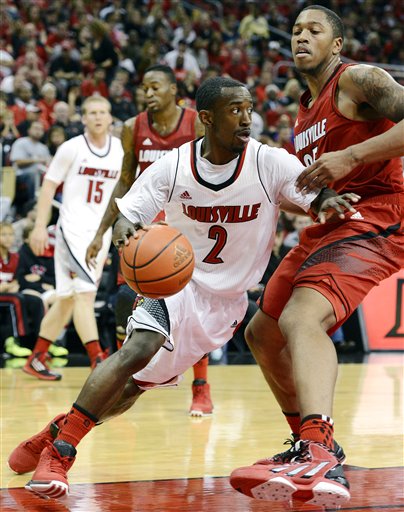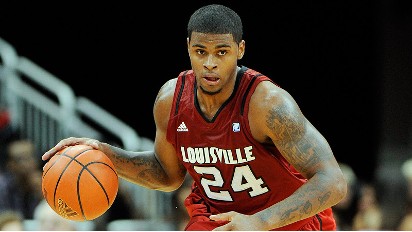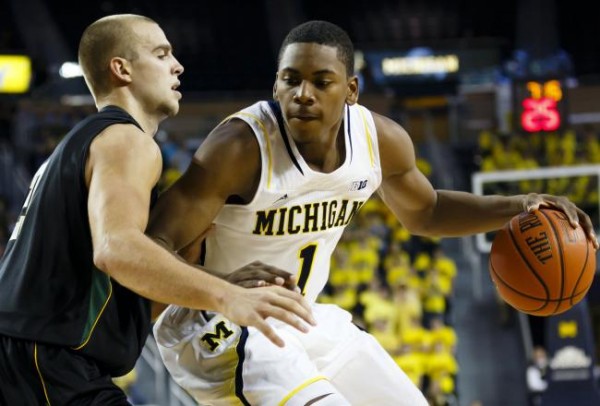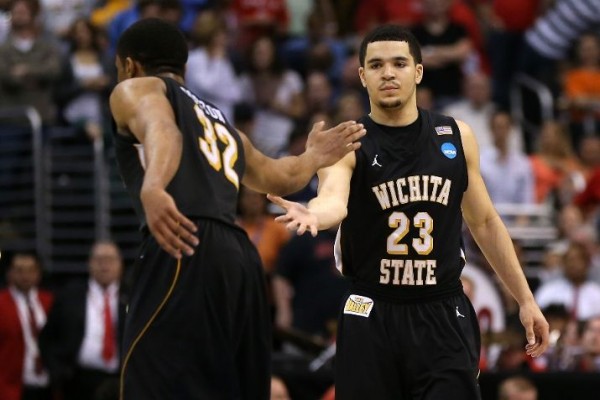Final Four Previews In-Depth: Syracuse Orange
Posted by Chris Johnson on April 5th, 2013It would have been easy to lose faith in Syracuse near the end of the regular season. The Orange sputtered to a 5-7 finish over their last 12 games, which in itself was enough point-blank evidence to jump off the bandwagon. The swirling rumors of NCAA impropriety and looming specter of coach Jim Boeheim’s retirement added to the general malaise that fell over this program as it hobbled into the final Big East Tournament at Madison Square Garden. What’s happened since? This In-Depth Final Four preview, the last installment of our four-part series, should give you a pretty good idea. The Orange are to be feared, and this, in long form, is my explanation why.
(Revisit previous entries Wichita State, Michigan and Louisville)
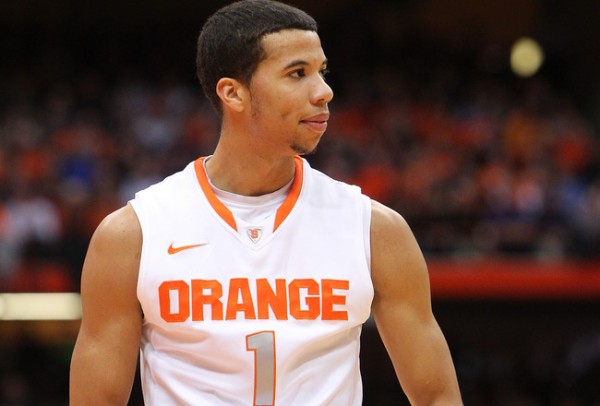
Smart and controlled point guard play from MCW has pushed Syracuse into the Final Four (Getty Images).
Pre-Tournament Capsule. Non-conference schedules in Syracuse, New York, are unfailingly bland subjects. The Orange hardly ever leave the state of New York, and when they do – as was the case this season when they opened the season by traveling across the country to play San Diego State on top of the USS Midway aircraft carrier, as well as an SEC-Big East challenge game at Arkansas – it’s extremely rare and/or typically not of their own volition. The Orange “ventured” to Madison Square Garden three days before Christmas and took their only loss before Big East play, a four-point defeat to Temple. They buzzed through the early part of conference play looking like one of the four or five best teams in the country, with wins at Louisville and home Notre Dame sprinkled therein. Things got ugly in the portion of the hoops calendar we like to call the “dog days” – the mid-to-late February stretch of conference play where teams start running on fumes at the tail end of a long league schedule. The Orange dropped four of five to close the regular season, then got off the mat and played their way into the Big East Tournament championship game, an emotional conference sendoff that ended with fellow ACC-bound member Louisville tearing the lid off MSG in a pristine second-half effort. Syracuse may have fallen in the finals, but that ugly stretch at the end of conference play was officially a figment of the past. The Orange were ready for the Big Dance.
How They Got Here. There was nothing circuitous or fluky about Syracuse’s path to Atlanta. They drubbed Montana in a game many thought could give the Orange real problems (HA!), pulled away from Cal in a hard-fought second half, put the nation’s then-No. 1 efficiency offense (Indiana) in the 2-3 blender and dropped Big East foe Marquette in the Elite Eight. Looking back, astonishing as it may seem, that round-of-32 bout with Cal was, I’d argue, the most trying game Syracuse has played in this year’s NCAA Tournament.
Final Four History. Only one of Syracuse’s Final Four appearances came before Boeheim inherited the head coaching job in 1976, and Boeheim was very much a part of that one too, only in a different capacity. When Syracuse reached the national semifinals in 1975, Boeheim had been an assistant for six seasons. Little did he know the head coaching job would open up one year later, and the rest – the four Final Four appearances, the 900 wins and counting, the national championship – became part of the legendary coaching monolith we know invariably associate with Syracuse basketball. Boeheim’s last Final Four trip with the Orange was led by one of the most dominant freshman stars in the modern hoops era and ended with a title. That would be Carmelo Anthony circa 2003.































